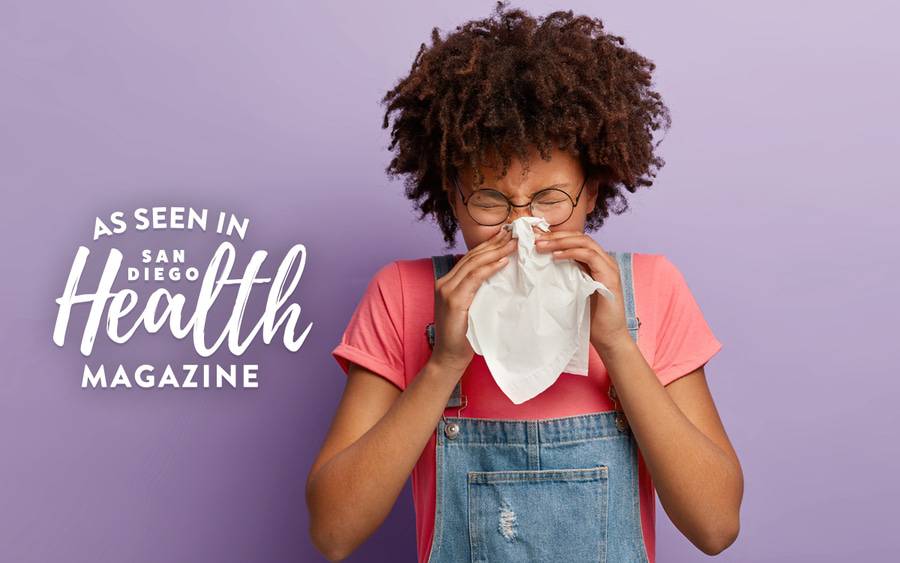Understanding Upper Respiratory Infections
Learn the differences between pneumonia, bronchitis and other upper respiratory tract infections

Learn the differences between pneumonia, bronchitis and other upper respiratory tract infections
Many different upper respiratory infections can bring about the same unpleasant symptoms, like a runny nose, fever, chills and coughing. Most of the time it’s just a common cold — but knowing the difference can save you a trip to your doctor or get you on the right treatment path quickly.
The sudden onset of wheezing, shortness of breath, tightening of the throat or a fever that doesn’t respond to over-the-counter medication are all cause for concern.
“If the symptoms worsen or last longer than 10 days, you should get checked out by a professional,” says Julio Romero, MD, family medicine physician at Scripps Coastal Medical Center Solana Beach. “The key is, you should get progressively better.”
However, if your symptoms are less severe, simply stay home, rest up and hydrate.
“You can use over-the-counter fever/pain reducers, expectorants, a saline gargle or a humidifier to treat your symptoms at home,” Dr. Romero says.
Upper respiratory infection symptoms and treatments
Learning the differences between these upper respiratory tract infections can help you understand when to stay home, when to visit the doctor and what else to watch out for.
Bronchitis (aka “chest cold”)
- Cause: Usually the flu or another virus but can also be caused by bacteria.
- Condition: Lower respiratory infection that results in inflammation of the trachea and the airways connecting it to the lungs.
- Telltale signs: Bad cough that can be dry or produce phlegm lasting more than five days.
- Other symptoms: Nasal congestion, wheezing and possibly a minor fever. The cough can linger up to a month.
- Bronchitis treatment and prevention: Use standard cold and flu prevention measures. Inhale warm, moist air.
Pneumonia (known as “walking pneumonia” in mild cases)
- Cause: Usually bacteria but may also be virus.
- Condition: Infection and inflammation deep in the lungs.
- Telltale signs: Fever, chills, cough.
- Other symptoms: Many other symptoms can result, including exhaustion, nausea and extreme fatigue.
- Pneumonia treatment and prevention: Annual flu shots aid prevention. Chest X-ray may be necessary to diagnose.
Strep Throat (aka “pharyngitis”)
- Cause: Usually a virus but can also be bacterial.
- Condition: Very sore, inflamed throat. Usually occurs in children under 15 but can affect any age group.
- Telltale signs: Sore, red throat with white spots or patches.
- Other symptoms: Pain when swallowing, runny nose. Fever and swollen lymph nodes may also occur.
- Strep throat treatment and prevention: Strep throat is very contagious. Standard cold prevention and handwashing are key. Use pain relievers for viral infection; antibiotics for bacterial infection
Sinusitis (aka “sinus infection”)
- Cause: Bacteria or virus.
- Condition: Inflammation of the sinuses, frequently as a complication of the common cold.
- Telltale signs: Feeling pressure in the face, forehead or even teeth, and nasal congestion accompanied by thick yellow or green mucus. Feels like a cold that refuses to go away.
- Other symptoms: Fever and fatigue may occur.
- Sinus infection treatment: Stay well hydrated and inhale warm, moist air.

This content appeared in San Diego Health, a publication in partnership between Scripps and San Diego Magazine that celebrates the healthy spirit of San Diego.